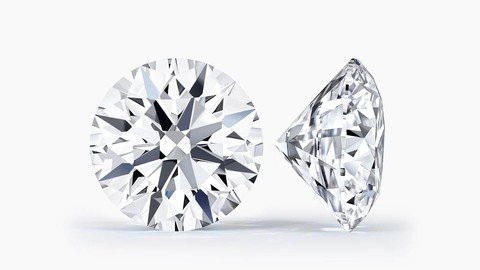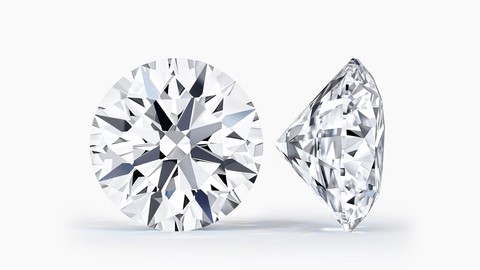
Free Download Mastering Lab Grown Diamonds
Published 3/2024
MP4 | Video: h264, 1920x1080 | Audio: AAC, 44.1 KHz
Language: English | Size: 1.45 GB | Duration: 2h 14m
From Science to Sustainability
What you'll learn
Introduction to Lab Grown Diamonds
History and Milestones
Manufacturing Processes
Crystal Structure and Composition
Quality Control and Grading Standards
Environmental Impact
Market Trends and Economic Impact
Requirements
No prior knowledge required, suitable for beginners and industry professionals.
Access to a computer or mobile device with an internet connection.
Passion for learning about diamonds and sustainability.
Description
Embark on a fascinating journey into the world of lab-grown diamonds with this comprehensive Udemy course. Led by industry experts, this course delves into the scientific processes, ethical considerations, and environmental impact of lab-grown diamonds. Whether you're a jewelry enthusiast, a professional in the gem industry, or someone curious about sustainable alternatives, this course equips you with the knowledge needed to navigate the realm of lab-grown diamonds confidently.Course Outline:Introduction to Lab-Grown DiamondsDefinition and backgroundSignificance in the jewelry industryHistory and MilestonesEarly experiments and breakthroughsKey milestones in the development of lab-grown diamondsManufacturing ProcessesHigh Pressure High Temperature (HPHT) methodChemical Vapor Deposition (CVD) methodOther emerging techniquesCrystal Structure and CompositionUnderstanding the composition of lab-grown diamondsCrystal structure and its significanceQuality Control and Grading StandardsOverview of grading standardsQuality control measures in the lab-grown diamond industryEnvironmental ImpactComparison with traditional diamond miningEnergy consumption and carbon footprintMarket Trends and Economic ImpactGrowth of the lab-grown diamond marketPrice differentials and consumer preferencesEthical ConsiderationsAddressing concerns related to conflict diamondsLabor practices and supply chain transparencyComparison with Natural DiamondsPhysical properties and visual distinctionsCultural and symbolic differencesIndustry PerspectivesPerspectives from jewelers, manufacturers, and retailersFuture developments and collaborationsFuture Trends and AdvancementsInnovations in lab-grown diamond technologyAnticipated trends and challenges in the industry
Overview
Section 1: Introduction
Lecture 1 Definition and background of lab grown diamonds
Lecture 2 Significance of lab grown diamonds in the jewelry industry
Lecture 3 Key differences between lab grown and natural diamonds
Section 2: History and Milestones
Lecture 4 Early experiments in lab-grown diamond research
Lecture 5 Key milestones in the industry's evolution
Section 3: Manufacturing Processes
Lecture 6 High Pressure High Temperature (HPHT) method
Lecture 7 Chemical Vapor Deposition (CVD) method
Lecture 8 Other emerging techniques shaping the future of lab grown diamonds
Section 4: Crystal Structure and Composition
Lecture 9 Detailed insight into the crystal structure of lab grown diamonds
Lecture 10 Understanding the chemical composition and how it compares to natural diamonds
Section 5: Quality Control and Grading Standards
Lecture 11 Overview of grading standards for lab grown diamonds
Lecture 12 Quality control measures implemented in the industry to ensure high standards
Section 6: Environmental Impact
Lecture 13 A comparative analysis of lab grown diamonds and traditional diamond mining
Lecture 14 Assessment of energy consumption and carbon footprint associated with lab grown
Section 7: Market Trends and Economic Impact
Lecture 15 Examination of the growth trajectory in the lab grown diamond market
Lecture 16 Factors influencing price differentials and consumer preferences
Section 8: Ethical Considerations
Lecture 17 Addressing concerns related to conflict diamonds in the traditional diamond
Lecture 18 Exploration of ethical practices, including labor considerations and supply chai
Section 9: Comparison with Natural Diamonds
Lecture 19 Understanding the physical properties and visual distinctions between
Lecture 20 Examining cultural and symbolic differences between the two types of diamonds
Section 10: Industry Perspectives
Lecture 21 Perspectives from jewelers, manufacturers, and retailers on lab-grown diamonds
Lecture 22 Insights into future developments and collaborations within the industry
Section 11: Future Trends and Advancements
Lecture 23 Innovations in lab grown diamond technology
Jewelry Enthusiasts,Industry Professionals,Consumers and Buyers,Environmental and Ethical Advocates,Entrepreneurs and Innovators,Educators and Trainers
Homepage
Recommend Download Link Hight Speed | Please Say Thanks Keep Topic Live
No Password - Links are Interchangeable










